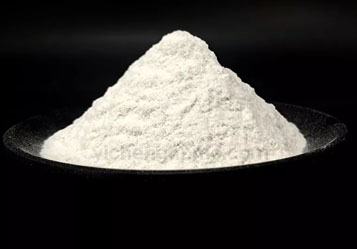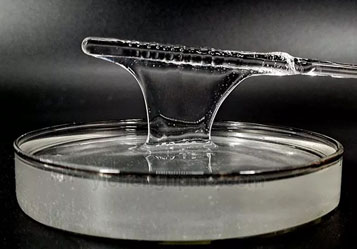What Are the Main Functions of HPMC in A Dry Mix Mortar?
Hydroxypropyl methylcellulose is one of the key ingredients in dry-mix mortars because of its ability to influence key dry-mix properties such as water retention, curing, workability, rheology, and thixotropy.
1. Water Retention
The excellent water retention of hydroxypropyl methylcellulose gives the cement a longer hydration time and improves the adhesion of the mortar to the substrate. It effectively prevents the mortar from losing water too quickly and causing dryness and cracking, allowing the mortar to be worked for longer.
The viscosity, dosage, ambient temperature, and molecular structure of HPMC have a significant impact on its water retention properties. Under the same conditions, the higher the viscosity of HPMC, the better the water retention; the higher the content, the better the water retention.
Generally, a small amount of HPMC can greatly improve the water retention rate of mortar. When the content reaches a certain level, the trend of increasing water retention slows down; as the ambient temperature increases, the water retention of HPMC usually decreases, but some modified HPMC also has better water retention under high-temperature conditions; the lower the degree of substitution, the better the water retention of HPMC.
High Water Retention HPMC for Dry Mix Mortar
2. Air-entraining effect
HPMC has an obvious air-entraining effect on fresh cement-based materials and has both hydrophilic groups (hydroxyl, ether) and hydrophobic groups (methyl, glucose ring). HPMC is a surface active and air-entraining surfactant, and the air-entraining effect of HPMC produces a "ball" effect, which can improve the workability of the fresh mix, such as increasing the plasticity and smoothness of the mortar during operation, which is beneficial to the spreading of the mortar; it will also increase the yield of the mortar and reduce the production cost of the mortar; however, it will increase the porosity of the hardened material, reducing its mechanical properties such as strength and modulus of elasticity.
As a surfactant, HPMC also has a wetting or lubricating effect on cement particles, which together with its air-entraining effect increases the fluidity of cementitious materials, but its thickening effect reduces fluidity. the effect of HPMC on the fluidity of cementitious materials is a combination of plasticizing and thickening effects. In general, when the HPMC content is very low, it mainly shows a plasticizing or water-reducing effect; when the HPMC content is high, the thickening effect of HPMC increases rapidly, the air-entraining effect tends to saturate, and the performance increases. Thickening effect or increase the water demand.
HPMC for Dry Mix Mortar
3. Thickening and thixotropy
HPMC gives the wet mortar excellent viscosity, which can significantly improve the bonding ability of the wet mortar and the base, and improve the anti-sagging property of the mortar. It is widely used in plastering mortars, decorative brick bonding mortars, and external wall insulation systems. HPMC's thickening effect can also increase the dispersion resistance and homogeneity of freshly mixed materials, preventing delamination, segregation, and water secretion, and can be used in fibrous concrete, underwater concrete, and self-compacting concrete.
The thickening effect of HPMC on cementitious materials is derived from the viscosity of the HPMC solution. Under the same conditions, the higher the viscosity of HPMC, the better the viscosity of the modified cementitious material, but if the viscosity is too high, the fluidity and workability of the material will be affected. Self-leveling mortars and self-compacting concrete require high flowability and very low viscosity for HPMC. In addition, the thickening effect of HPMC increases the water demand for cementitious materials and increases the yield of the mortar.
Yicheng Technology Co., Ltd is the leading HPMC and RDP producer in China. Supply different specifications for various applications. For more information and consultation, contact us here!
The source is from here.

